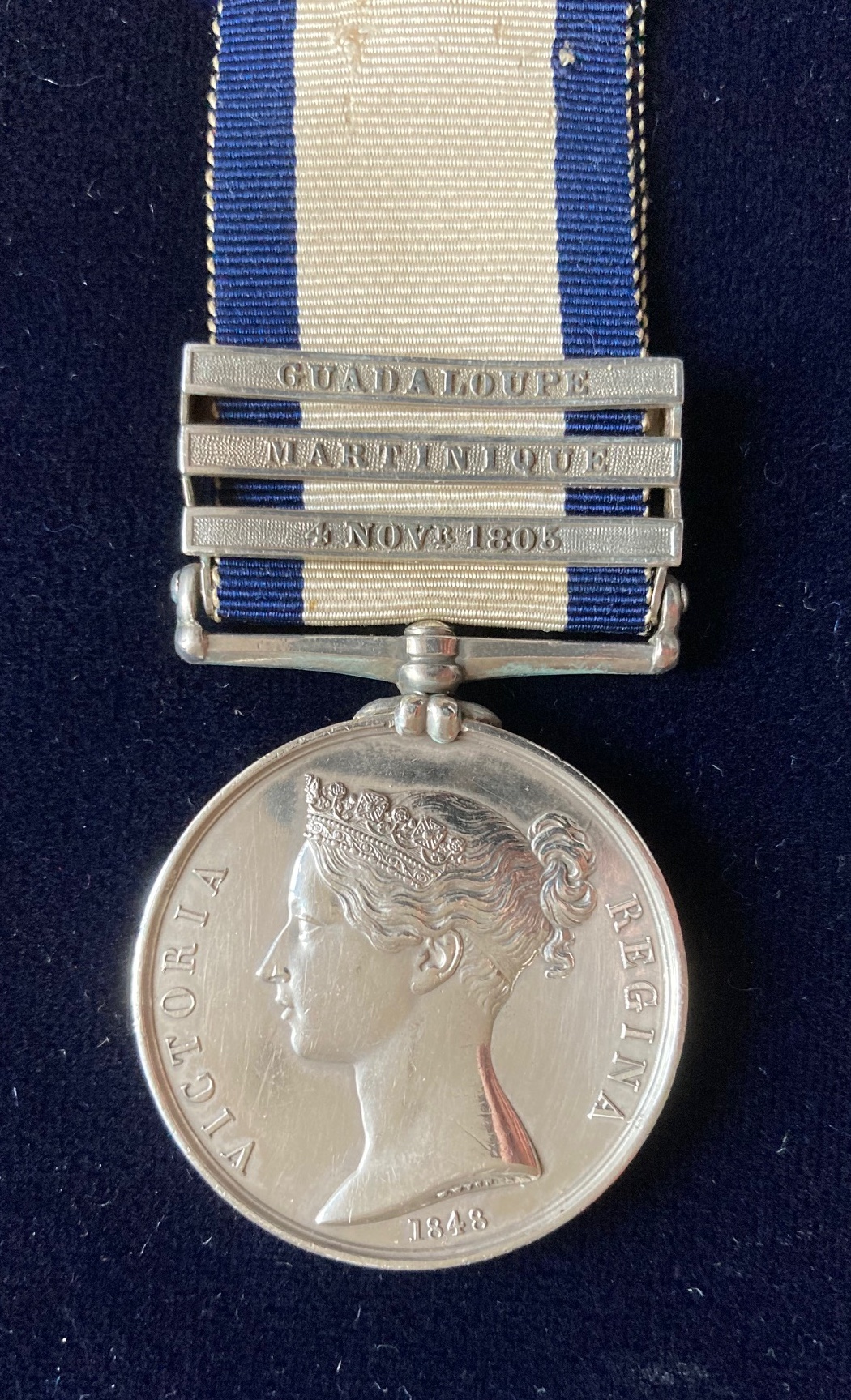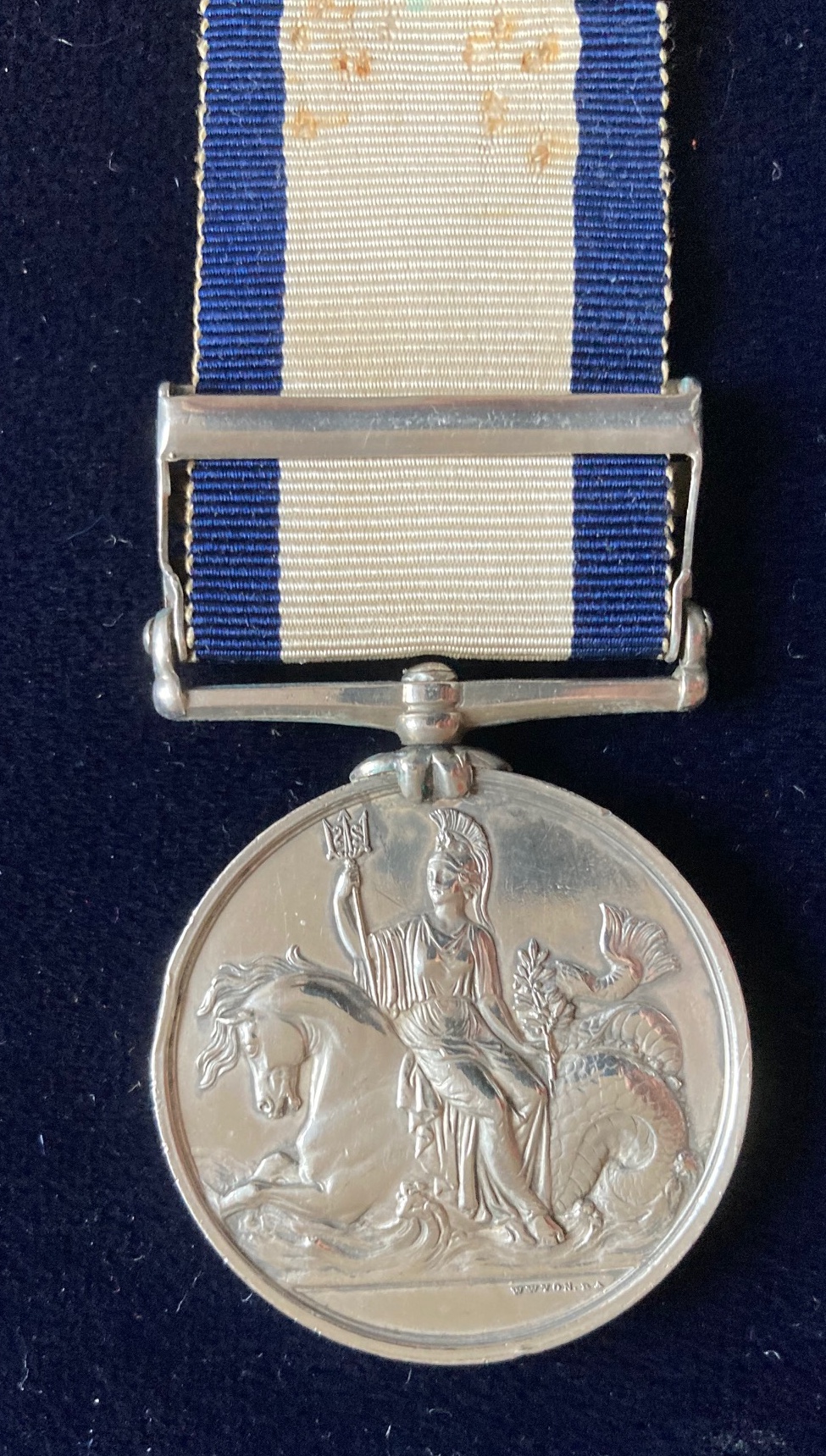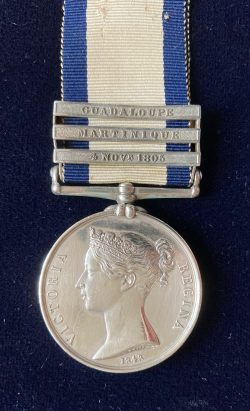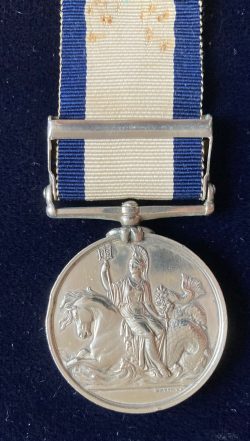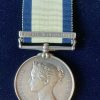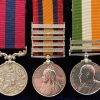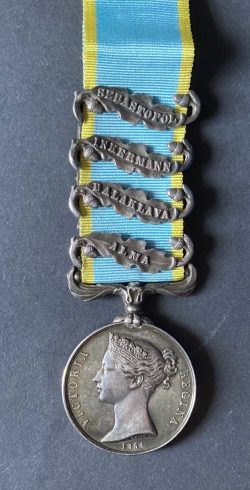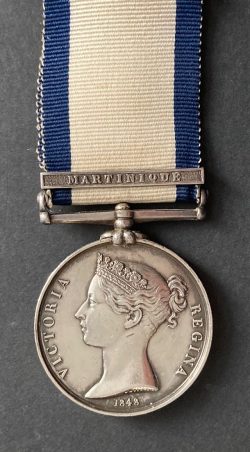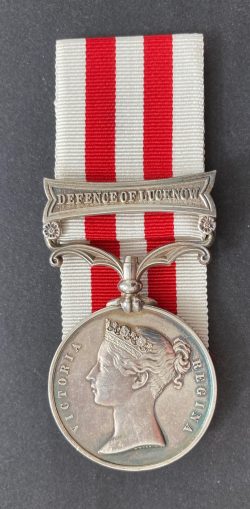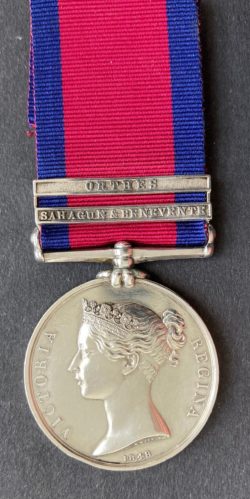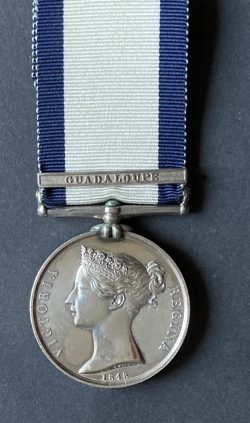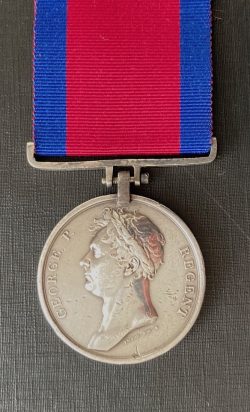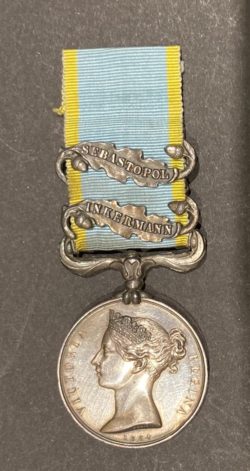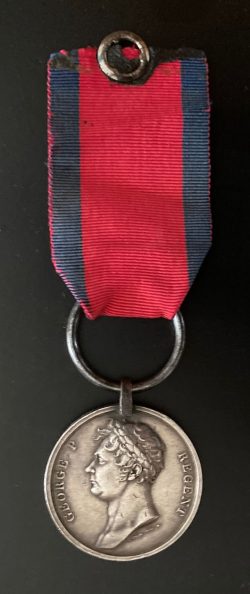Subtotal: £2,050.00
Naval General Service 1793-1840, three clasps, 4 Novr. 1805, Martinique, Guadaloupe, Master´s Mate. Later as Master of HMS Carnation at the sanguinary boat action against the American Privateer General Armstrong, 26 September, 1814
£5,500.00
Out of stock
Naval General Service 1793-1840, three clasps, 4 Novr. 1805, Martinique, Guadaloupe
Wm. Farley, Master´s Mate.
William Farley served as Midshipman in H.M.S. Hero as part of Commodore Sir Richard Strachan´s squadron, when he captured four French ships of the line, off Ferrol on the north coast of Gallicia, Spain, 4.11.1805. Four Small Naval Gold Medals were awarded for this action; Farley then served as Master´s Mate in H.M.S. Fawn as part of the combined naval and military assault and capture of the French-held island of Martinique in the Caribbean Sea, 24.2.1809; he continued to serve in the same rank and in the same ship during the combined naval and military operations commanded by Vice Admiral the Honourable Sir Alexander Cochrane and Lieutenant General Sir George Beckwith which culminated in the capture of the French-held Island of Guadaloupe, January-February 1810. William Farley qualified as Master for the 1st Rate ´line-of-battle´ ships, 17.7.1813; served in this capacity in H.M.S. Carnation (Captain G. Bentham), on the West India station, October 1813-April 1816; during which time, ´he witnessed an alarming fire in the dockyard of Port Royal, which was saved in a great measure by the officers and crew of that vessel´ (O´Byrne refers); served in H.M.S. Revolutionnaire (Captain the Hon. Fleetwood Pellew) in the Mediterranean, 1818-1822; served in the Herald, 1824-1830, during which time ´the latter vessel made a voyage to St. Petersburg, conveyed the Bishops of Jamaica and Barbados to their respective sees, brought upwards of a million dollars home from the Havana, took the Earl of Dalhousie to Quebec, landed the Marquis of Hastings at Malta, attended to the Duke of Devonshire on the occasion of his splendid embassy to Russia, conveyed to India Mr. Lushington, the Governor of Madras, brought home Earl Amherst, proceeded to Barbados and Jamaica with Major-General Sir James Lyon and the Earl of Belmore, the Governors of those islands, and was sent with Lord Heytesbury to St. Petersburg, Mr. Turner (Envoy-Extraordinary) to Carthagena, and Lord Aylmer to Quebec, returning from the last place mentioned with Sir James Kempt. Mr. Farley was placed on the reserved list in 1851´ (O´Byrne refers).
On the 26th of September, 1814, the General Armstrong was lying at anchor in the road of Fayal. Her aster was Samuel Chester Reid, 3 and she had a crew of ninety men on board. A British squadron, composed of the Plantagenet, 74, Captain Robert Lloyd, Rota, 38, Captain Philip Somerville; and Carnation, 18, Commander George Bentham, hove in sight towards sundown. Experience had taught the Americans not to trust to the neutrality of a weak Power for protection; and Reid warped his brig near shore, and made ready to repel any attempt to cut her out. Soon after dark Captain Lloyd sent in four boats. He asserted that they were only sent to find out what the strange brig was; but of course no such excuse was tenable. Four boats, filled with armed men, would not approach a strange vessel after nightfall merely to reconnoitre her. At any rate, after repeatedly warning them off, Reid fired into them, and they withdrew. He then anchored, with springs on his cables, nearer shore, and made every preparation for the desperate struggle which he knew awaited him. Lloyd did not keep him long in suspense. Angered at the check he had received, he ordered seven boats of the squadron, manned by about a hundred and eighty picked men, to attack the privateer. He intended the Carnation to accompany them, to take part in the attack; but the winds proved too light and baffling, and the boats made the attempt alone. Under the command of Lieutenant William Matterface, first of the Rota, they pulled in under cover of a small reef of rocks, .where they lay for some time; and, at about midnight, they advanced to the attack.
The Americans were on the alert, and, as soon as they saw the boats rowing in through the night, they opened with the pivot-gun, and immediately afterwards with their long 9’s. The British replied with their boat carronades, and, pulling spiritedly on amidst a terrific fire of musketry from both sides, laid the schooner aboard on her bow and starboard quarter. A murderous struggle followed. The men-of-wars’ men slashed at the nettings and tried to clamber up on the decks, while the privateersmen shot down the assailants, hacked at them with cutlass and tomahawk, and thrust them through with their long pikes. The boats on the quarter were driven off; but on the forecastle the British cut away the nettings, and gained the deck. All three of the American mates were killed or disabled, and their men were beaten back; but Reid went forward on the run, with the men of the after division, and tumbled the boarders back into their boats. This put an end to the assault. Two boats were sunk, most of the wounded being saved as the shore was so near; two others were captured; and the others, crippled from their losses, and loaded with dead and disabled men, crawled back towards the squadron. The loss of the Americans was slight. Two were killed and seven wounded. The fearful slaughter in the British boats proved that they had done all that the most determined courage could do. Two-thirds of the assailants were killed or wounded. The number killed was 34, including Lieutenants William Matterface and Charles E. Norman. The number wounded was 86, including Lieutenant Richard Rawle, Lieutenant Thomas Park, R.M., Purser William Benge Basden, and two Midshipmen.
The brig’s long 24 had been knocked off its carriage by a carronade shot, but it was replaced and the deck again cleared for action. Next day the Carnation came in to destroy the privateer, but was driven off by the judicious use of the long-gun. However, as soon as the wind became favourable, the Carnation again advanced. Further resistance being hopeless, the General Armstrong was scuttled and burned, and the Americans retreated to the land.
Provenance: Glendining January 1931 Baldwin February 1954 Glendining June 1987 Spink July 2000, Spink Turl Collection 2010 £6,450
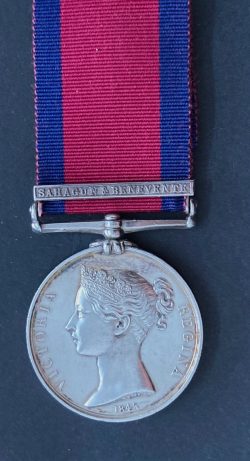 Military General Service single clasp Sahagun & Benevente, 7th Light Dragoons
Military General Service single clasp Sahagun & Benevente, 7th Light Dragoons 